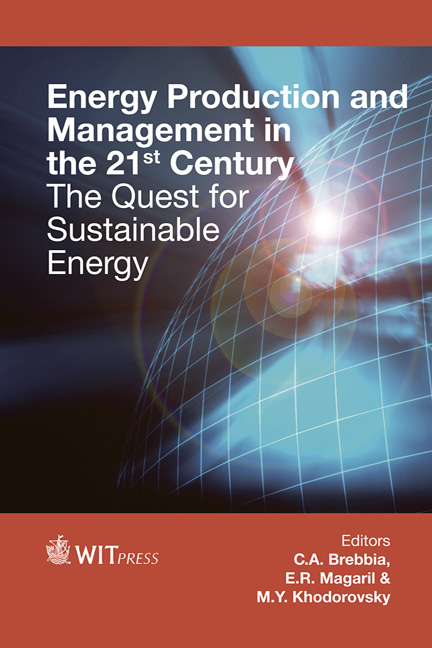Improvement Of The Anaerobic Digestion Of Activated Sludge: Thermal And Economical Perspectives
Price
Free (open access)
Transaction
Volume
190
Pages
13
Page Range
979 - 991
Published
2014
Size
300 kb
Paper DOI
10.2495/EQ140922
Copyright
WIT Press
Author(s)
B. Ruffino, G. Campo, M. C. Zanetti & G. Genon
Abstract
The treatment of municipal or industrial wastewaters generates primary and secondary sludge that in medium and large wastewater treatment plants (WWTPs) are stabilized by means of anaerobic digestion (AD) processes. Due to several causes like the increasingly cogent European and national laws concerning the quality of sludge after stabilization, the high costs of landfilling and the profit of energy generated by renewable sources, different technologies are under consideration in order to enhance the performances of the AD of sludge, in particular secondary sludge. With reference to a WWTP with a capacity of more than 2 million equivalent inhabitants that generates an average daily flow of 6,000 m3 primary and secondary sludge (at a total solid, TS, content of about 1%), two solutions aimed at improving the performances of the AD process were evaluated considering technical and economical aspects. The possible first solution planned the thickening of secondary sludge, with the aim of searching for the optimal TS content able to guarantee the thermal sustainability of the AD process. TS content ranging from 3.5% to 8% was considered in the calculations. It was verified that the achievement of a TS content of 4% is enough to make the AD of both primary (at a TS content of 3.5%) and secondary sludge independent of the employment of an auxiliary fuel. Higher TS values for secondary sludge, although enhancing the production of thermal energy, are not recommended because of the worsening of their rheological behaviour. On the other hand, the possible second solution planned the pre-treatment of secondary sludge using low-temperature (< 100°C) processes that could be performed by making use of heat exchangers or overheated vapour. It was Energy Production and Management in the 21st Century, Vol. 2 979 www.witpress.com, ISSN 1743-3541 (on-line) WIT Transactions on Ecology and The Environment, Vol 190, © 2014 WIT Press doi:10.2495/EQ140922 demonstrated that if all the heat generated by burning biogas is transferred to the secondary sludge through heat exchangers, a TS content of 3.70% is enough to make the thermal pre-treatment at 70°C independent of the employment of an auxiliary fuel. Keywords: anaerobic digestion, wastewater treatment plant (WWTP), primary and secondary sludge, energy balance.
Keywords
anaerobic digestion, wastewater treatment plant (WWTP), primary and secondary sludge, energy balance.





